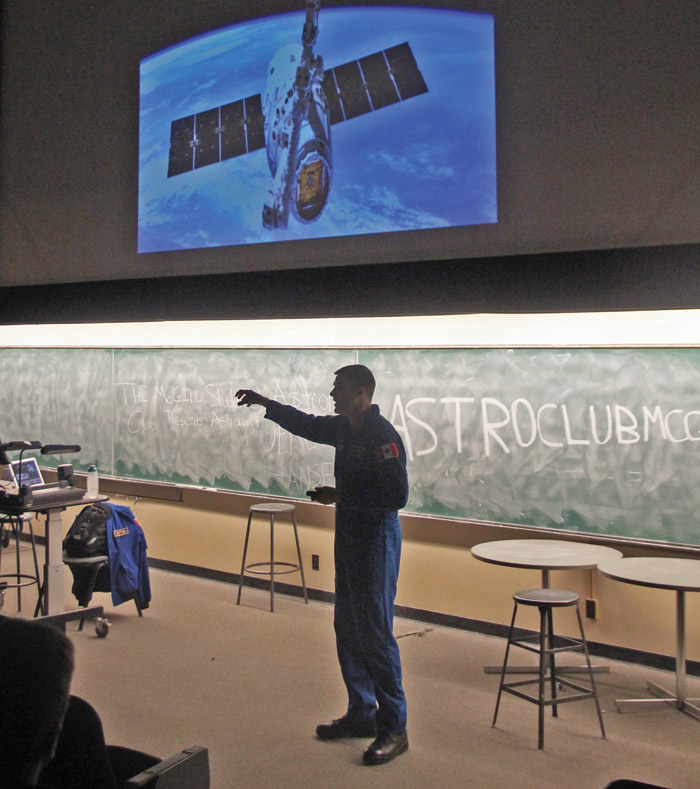The Frank Dawson Adams (FDA) auditorium hosted an auspicious guest on Wednesday when Jeremy Hansen walked through the doors. The Canadian astronaut talked about his profession, space travel, and how space fits into society.
He presented the audience with stunning images of Earth taken from the International Space Station (ISS) and pictures of far-away planets gathered from a variety of space shuttles.
While sending robots to explore the solar system produces valuable scientific data, sending people into space is what actually captures the public’s interest.
The talk would not have been complete without a discussion on how to become an astronaut. Hansen’s path was conventional: He joined air cadets in school, went on to the Royal Military College to study Space Science, attended flight school, and then spent a few years flying F-18 fighter jets before applying to the Canadian Space Agency.
“I always had [it] in the back of my mind that I wanted to get to space,” Hansen said. “I was very fortunate almost six years ago when the Canadian Space Agency hired David St-Jacques and [me] to start training to fly in space.”
The astronaut selection process is intense. Thousands of applicants are gradually pared down in a months-long process. Hansen attributed much of his success to the attitude with which he approached the application.
“I just wanted to do my best,” he explained. “Other people were sure that they were going to be an astronaut, so they put a lot of pressure on themselves […] and ultimately that ended up hurting them [because] they didn’t perform as well on the tests.”
Hansen calls himself a “rookie astronaut” because he hasn’t gone into space yet. So far, his training has been limited to Earth, an invaluable process that includes training in multiple disciplines such as geology and survival situations.
The job, while rewarding, is incredibly demanding. When asked how he managed to balance his relationship with his family with a career as an astronaut, Hansen acknowledged that it was a challenge.
“I’m gone one week a month,” he said. “But it’s comparable to other high-energy jobs [….] I aim for quality over quantity, so even if I’m not there with my kids all the time, I’m still able to make the most of my time with them.”
When evaluating the benefits and the drawbacks, choosing the life of an astronaut may seem futile, given the scarcity of career opportunities. However, this career may be more relevant now than ever before.
“We’re starting to see more private corporations getting into space exploration [with] companies like SpaceX and Boeing building cheaper ways of getting people into space,” Hansen explained.
These private industries have the potential to make space more accessible.
Hansen is less optimistic about the Mars One mission—a program designed to establish a permanent human settlement on Mars by 2027. Beyond the technical challenges of the journey and landing, he also highlighted the psychological issues associated with abandoning Earth.
“It doesn’t surprise me that there are people who are willing to go to Mars on a one-way trip,” he said. “When you get to Mars […] it’s going to be super cool. But then when all that is done you’re going [to think]: ‘Wow, this sucks. The Earth was such an awesome place […] and I’m going to live in this tin can for the rest of my life.’ And I think that’s going to be really hard on people.”
Still, Hansen believes that humans will be able to send a mission into deep space within the next few decades, even if it isn’t for permanent settlement. It’s in these future missions that Hansen believes society has the most to learn.
“For me, this is why we explore,” Hansen said. “Often, we achieve specific objectives, but ultimately, [we know] that there is often more to discover in the things that we didn’t know to look for.”








